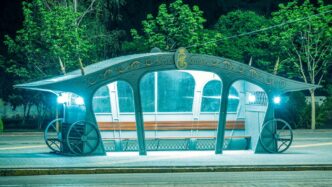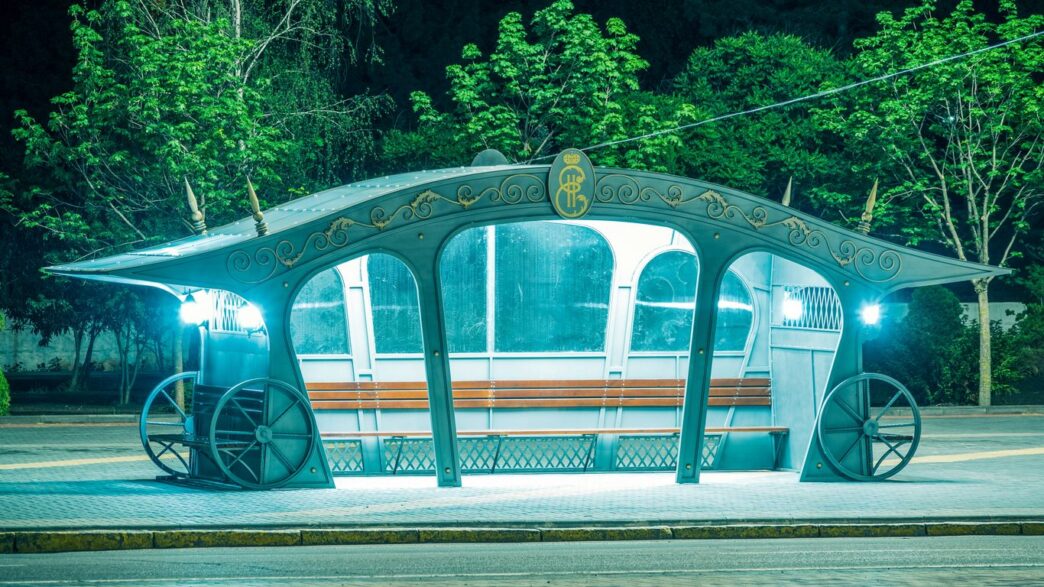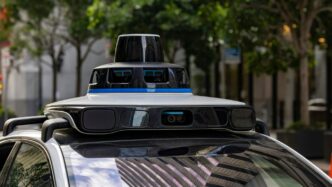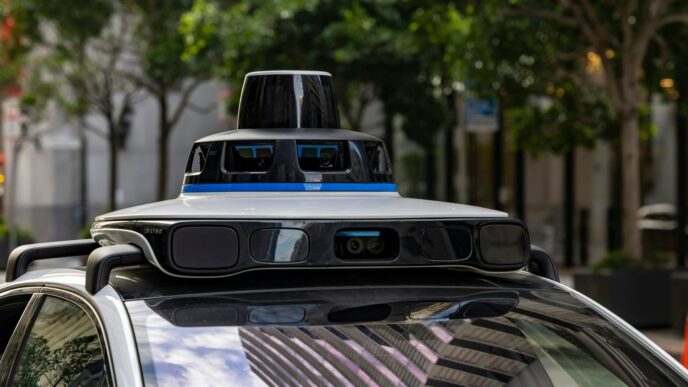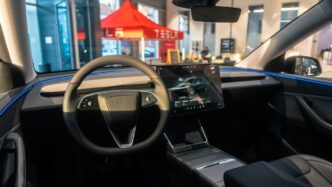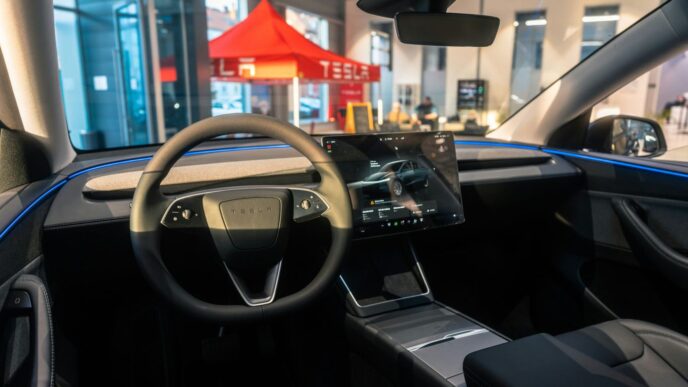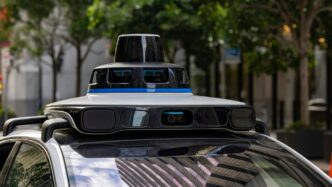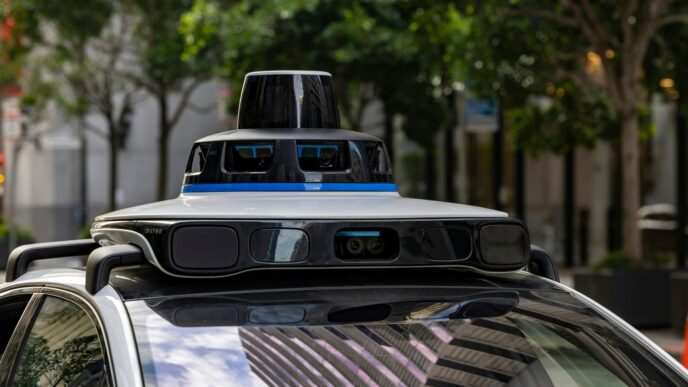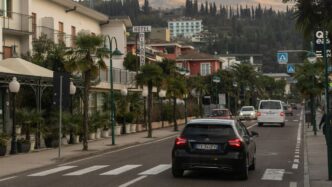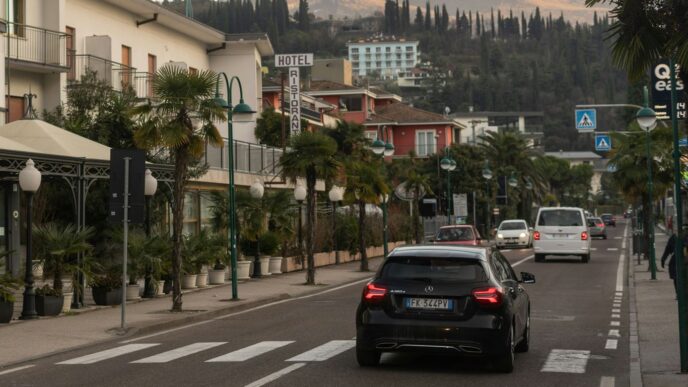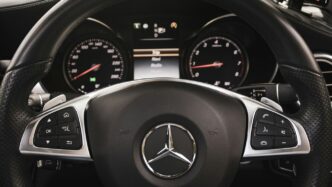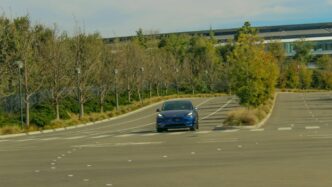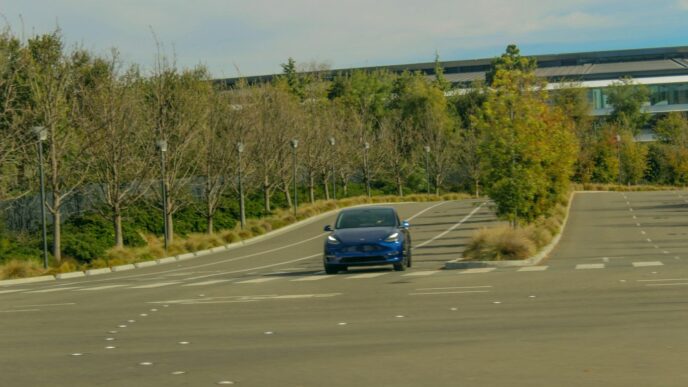Revolutionizing Urban Mobility with Sustainable Alternatives
Cities are getting crowded, and let’s be honest, the daily commute can be a real drag. We’re talking about endless traffic jams, air that’s not exactly fresh, and a general feeling of being stuck. But what if there’s a better way? We’re seeing a big shift towards making our cities move more smoothly and cleanly, and it’s all about embracing sustainable options. This isn’t just about being ‘green’; it’s about making our daily lives easier and our cities healthier places to live.
Enhancing Public Transit Networks
Public transportation is the backbone of any city trying to move people efficiently. Instead of everyone being in their own car, imagine a robust system of buses, trains, and trams that actually work for people. This means more routes, more frequent service, and making sure the vehicles themselves are comfortable and reliable. Think about cities investing in new light rail lines or expanding existing subway systems. It’s not just about adding more trains; it’s about making the whole experience better, from easy ticketing to clean stations. We need public transit that people want to use, not just one they feel forced into.
Here’s a quick look at what makes public transit shine:
- Increased Accessibility: More routes mean more people can get where they need to go, regardless of where they live.
- Reduced Congestion: Every person on a bus or train is one less car on the road.
- Environmental Benefits: Fewer cars mean less pollution and a cleaner city.
Promoting Active Transportation
Sometimes, the best way to get around is on your own two feet or two wheels. Promoting walking and cycling isn’t just about exercise; it’s about creating a more connected and vibrant urban environment. This involves building safe, dedicated bike lanes that don’t just end abruptly, and making sure sidewalks are clear and well-maintained. Think about cities that have really embraced bike-sharing programs or created pedestrian-only zones in busy areas. It encourages people to explore their neighborhoods, support local businesses, and get some fresh air. It’s a simple idea, but it can really change the feel of a city.
The Rise of Electric Vehicles in Cities
Electric vehicles (EVs) are no longer a novelty; they’re becoming a practical solution for urban transport. We’re seeing more electric buses on the streets, quieter and cleaner than their diesel counterparts. Personal EVs are also becoming more common, helped by growing charging infrastructure. While the initial cost can still be a hurdle for some, the long-term savings on fuel and maintenance, not to mention the environmental impact, are significant. Cities are starting to see the benefits of a quieter, less polluted environment, and EVs are a big part of that picture. It’s about moving towards a future where our transport doesn’t cost the earth.
The Power of Integrated Multi-Modal Hubs

Imagine a city where hopping from a bus to a train, then maybe grabbing a shared bike, feels totally natural. That’s the idea behind integrated multi-modal hubs. It’s about bringing different ways to get around under one roof, or at least, really close together. The goal is to make switching between transport options as easy as possible. No more trekking across town to catch a different train; these hubs are designed to connect things smoothly.
Seamlessly Connecting Diverse Transport Modes
This isn’t just about parking a bus next to a train station. It’s about making the whole experience flow. Think about covered walkways so you don’t get rained on, clear signs pointing you where to go, and schedules that actually line up. It means thinking about how your luggage will be handled, how you’ll pay for different parts of your trip, and getting real-time updates on everything. It’s about reducing those annoying wait times and making sure you can get from point A to point B without a lot of hassle.
Here’s a look at what makes these connections work:
- Physical Links: Easy-to-use ramps, elevators, and clear pathways between different transport types.
- Information Systems: Real-time updates on arrivals, departures, and connections displayed clearly.
- Coordinated Services: Schedules that try to minimize transfer times and waiting.
Designing for Universal Accessibility
These hubs need to work for everyone. That means thinking about people with disabilities, older folks, and families with strollers. We’re talking about ramps, elevators, tactile paving for those with visual impairments, and accessible restrooms. Information needs to be available in different formats, like audio announcements and Braille. It’s about making sure the hub is welcoming and easy to use for every single person in the community. It’s not just about physical access, either. Affordability and ease of use for people from all walks of life are just as important.
Transforming Hubs into Community Centers
These hubs are more than just places to catch a ride. They can become lively spots in the city. By bringing people together, they can host shops, cafes, and public spaces where people can hang out. They can help cut down on traffic, improve air quality, and even boost local businesses. It’s a way to make getting around better for individuals and better for the whole community.
Consider these potential additions:
- Local retail and food vendors
- Community gathering spaces
- Bike repair stations and secure storage
- Information kiosks about local events and services
Intelligent Transportation Systems and Smart Services
Think about how much easier getting around could be if our roads and vehicles were a lot smarter. That’s basically what Intelligent Transportation Systems, or ITS, are all about. They use technology to make our travel smoother, safer, and maybe even a little less frustrating. The whole idea is to get different parts of the transport world talking to each other. This means cars, traffic lights, signs, and even your phone could share information to make everything work better.
Leveraging Real-Time Data for Traffic Management
Imagine not getting stuck in a traffic jam because the system knew about it before you even left the house. ITS can do that by looking at live traffic information. This data helps manage traffic lights more effectively, reroute cars around accidents, and even predict where traffic might get bad. It’s like having a super-smart traffic cop for the whole city.
Here’s how it helps manage traffic:
- Predicting Congestion: By analyzing current traffic flow, ITS can forecast where jams are likely to form.
- Dynamic Signal Timing: Traffic lights can adjust their cycles based on real-time vehicle counts, not just a fixed schedule.
- Incident Response: Faster detection of accidents or breakdowns means quicker responses and less disruption.
Empowering Travelers with Instant Information
No more guessing when the next bus is coming or if there’s parking available. ITS can give you all sorts of useful info right when you need it. This could be through apps on your phone, screens at bus stops, or even displays inside your car. You can find out about bus schedules, train times, parking spots, and the best routes to take.
Here’s the kind of info you can expect:
- Real-time Arrival Times: Know exactly when your public transport will show up.
- Parking Availability: Find open spots in busy areas without circling.
- Route Planning: Get the quickest or most efficient way to your destination, considering current traffic.
Enhancing Safety Through Smart Technology
Safety is a big part of ITS. Cars can communicate with each other and with the road infrastructure to warn drivers about potential dangers. This could be anything from a car suddenly braking ahead to a slippery patch of road. These systems can alert you to hazards, help you maintain a safe speed, and even keep you in your lane. It’s about using technology to prevent accidents before they happen.
Embracing Mobility-On-Demand Solutions
Think about how you get around today. It’s not just about owning a car anymore, is it? We’ve got apps for everything, and transportation is no different. Mobility-On-Demand, or MOD, is basically using technology to give you more control over how you travel. It’s like having a personal transport assistant right in your pocket.
Personalized Transportation at Your Fingertips
This is where things get really interesting. MOD services mean you can grab a ride when you need it, without having to stick to a fixed schedule. Need to get across town for a meeting? Just open an app, and a car can be there. Want to zip around a busy downtown area? A scooter or bike share is probably just around the corner. The whole idea is to make getting from point A to point B as easy and convenient as ordering takeout. It’s about treating travel like a service you can customize, picking the option that best fits your needs at that moment, whether it’s speed, cost, or just plain convenience.
Bridging Gaps in Public Transit Coverage
Let’s be honest, public transport doesn’t always go everywhere. There are often areas, especially on the outskirts of cities or in less populated neighborhoods, where bus routes are few and far between, or maybe they stop running too early. MOD services can step in here. They can act as a first-mile or last-mile solution, connecting you from your home to a main transit station, or taking you from the station to your final destination. This makes public transit a much more viable option for more people, even if they don’t live right next to a train line.
Here’s a look at how MOD can fill those gaps:
- First Mile/Last Mile: Connecting homes or workplaces to major transit hubs.
- Off-Peak Hours: Providing rides when traditional public transit schedules are limited.
- Underserved Areas: Offering transport options where fixed routes are scarce.
- On-Demand Shuttles: Flexible routes that adapt based on user requests.
Valuing Travel as a Customizable Product
With MOD, we start to see travel not just as a necessity, but as a product you can choose and even tailor. Different services will have different price points based on what they offer. A direct, private car ride will cost more than a shared shuttle, for example. Factors like how long you wait, how many times you have to switch vehicles, and how direct your route is all play a part in the value you get. This allows for a more transparent system where you can weigh the pros and cons of each option before you book. It’s about giving you the power to decide what kind of travel experience you want and how much you’re willing to pay for it.
Blockchain’s Role in Future Transport
[{"h2":"Blockchain’s Role in Future Transport","h3s":["Unifying the Transportation Ecosystem","Securing Data and Transactions","Enabling Decentralized Energy Trading"]}]Innovative Funding for Transportation Advancement
Getting the money needed for new transport projects can be a real headache. Cities are trying all sorts of creative ways to pay for things like better bus routes or new bike paths. It’s not just about finding the cash, but also about making sure the money is spent wisely and on things that actually help people get around.
Forging Public-Private Partnerships
This is where the city teams up with private companies. Think of it like a business deal. The company might help build a new train line or a charging station for electric cars, and in return, they get to share in the profits or get some other benefit. It’s a way to get big projects done without the city footing the entire bill upfront. Plus, these companies often bring their own smart ideas and ways of doing things.
- Shared risk and reward: Both the public and private sector have a stake in the project’s success.
- Access to private capital: This can speed up project timelines.
- Expertise and innovation: Private companies can bring new technologies and management skills.
Implementing Congestion Pricing Models
This one is pretty straightforward: if you drive into a busy part of town during peak hours, you pay a fee. It sounds a bit like a tax, and some people don’t like it, but the idea is that it makes people think twice about driving. The money collected from these fees can then be put directly back into improving public transport, fixing roads, or building more bike lanes. It can also help spread out traffic, so rush hour isn’t quite so bad for everyone.
| Zone | Peak Hour Fee | Off-Peak Hour Fee | Notes |
|---|---|---|---|
| Downtown Core | $5.00 | $2.00 | Applies weekdays 7 AM – 7 PM |
| Midtown | $3.00 | $1.00 | Applies weekdays 7 AM – 7 PM |
| Airport Access | $7.00 | $3.00 | Applies all days, 24 hours |
Securing Grants for Green Initiatives
Lots of organizations and governments want to see cleaner, greener cities. They offer money, called grants, to cities that want to invest in eco-friendly transport. This could be for buying electric buses, setting up more charging points for electric cars, or creating safe routes for people who want to walk or cycle. It’s a great way for cities to get a financial boost for projects that help the environment and make cities nicer places to live.
- Electric Vehicle Infrastructure Grants: Funds for charging stations and related equipment.
- Public Transit Modernization Grants: Support for upgrading bus fleets or rail systems with cleaner technology.
- Active Transportation Grants: Funding for bike lanes, pedestrian walkways, and safety improvements.
Wrapping It Up: What’s Next for Getting Around?
So, we’ve looked at a bunch of cool ideas for how we can all get around better in our cities. It’s not just about making traffic jams disappear, though that would be nice. It’s about making our towns cleaner, easier to live in, and more connected. Think smarter tech that helps traffic flow, buses and trains that actually run on time and go where you need them, and making it simple to hop from a bike to a train to a bus without a hassle. It’s a big job, and it means everyone – from the folks making the plans to you and me – has to be on board. By trying out new ways to fund these projects and sticking with greener options, we can build cities that are not only less stressful to navigate but also just plain nicer places to be. The future of how we move is definitely looking more interesting, and hopefully, a lot smoother for all of us.

